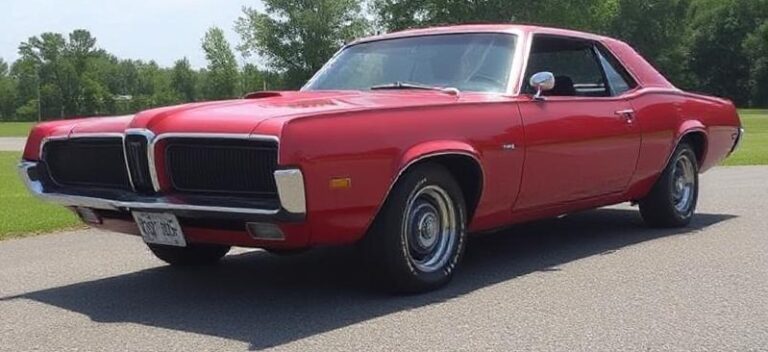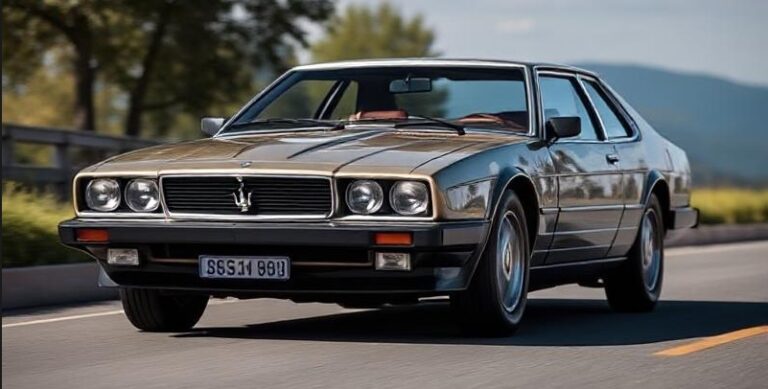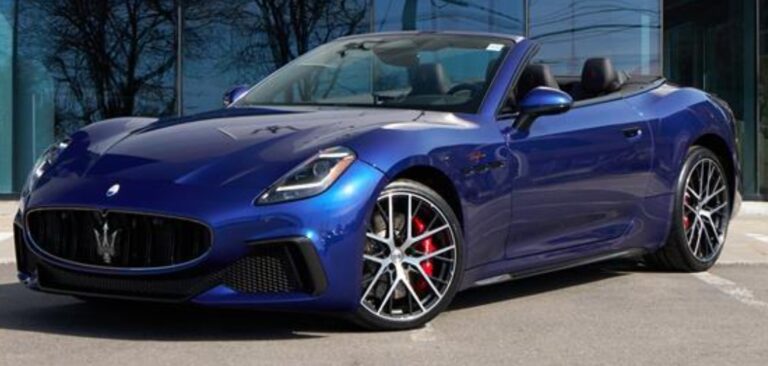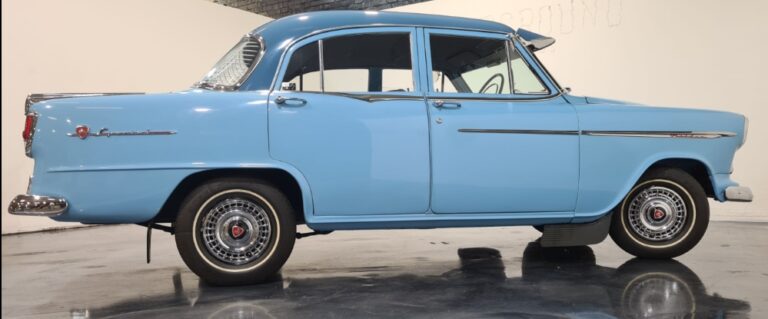The Fiat Topolino: A Tiny Icon’s Enduring Evolution
In the annals of automotive history, few cars possess the charm, resilience, and cultural significance of the Fiat Topolino. This diminutive Italian marvel, whose name translates to “little mouse” in Italian, became more than just a mode of transportation; it was a symbol of post-war recovery, a testament to Italian ingenuity, and a beloved fixture on roads across Europe and beyond. From its humble beginnings in the late 1930s to its eventual retirement in the 1950s, the Topolino underwent a fascinating evolution, adapting to changing times and demands while retaining its core identity. This article will delve into the life story of the Fiat Topolino, charting its production years, exploring its various models, and detailing the trim levels that made it accessible and desirable for a generation.
The Birth of a Legend: The Fiat 500 “Topolino” (1936-1948)
The story of the Topolino begins in the fertile ground of pre-war Italy, a nation looking towards industrialization and affordable personal mobility. Fiat, a titan of Italian industry, recognized this burgeoning need. The result was the Fiat 500, codenamed “Millecento” internally, and affectionately dubbed “Topolino” by the public due to its rodent-like appearance. Unveiled at the 1936 Turin Motor Show, the original Topolino was a revelation.
Under the visionary leadership of Dante Giacosa, Fiat engineers crafted a car that was remarkably advanced for its era. The engine, a modest 569cc, water-cooled, four-cylinder ohv unit, was mounted ahead of the front axle, a design choice that maximized interior space within its compact footprint. This front-wheel-drive configuration was groundbreaking, contributing to the car’s nimble handling and providing a flat floor for the passengers. The chassis was a robust self-supporting body, a departure from the traditional body-on-frame construction.
The initial model, the Fiat 500 A (1936-1938), set the tone. Its aerodynamic, tear-drop shaped body, with headlights integrated into the fenders, gave it a distinctive and endearing profile. The cabin was surprisingly spacious for its size, seating two adults comfortably with limited luggage space. The dashboard was simple, featuring a speedometer and essential controls. Production of the 500 A was relatively short-lived, paving the way for refinements in subsequent iterations.
Following the 500 A, Fiat introduced the Fiat 500 B (1938-1948). While visually similar to its predecessor, the 500 B featured several key mechanical upgrades. The engine was slightly revised to produce a little more power, and some minor improvements were made to the suspension and braking systems. The extended production run of the 500 B, spanning a decade and encompassing the difficult war years, highlights its enduring appeal and Fiat’s commitment to keeping this essential vehicle available. During the war, production naturally slowed, but the Topolino’s simplicity and reliability made it a valuable asset for essential services and military use.
.
THIS is GOOD stuff if your car is in need:

.
The Post-War Resurgence: The Fiat 500 C “Topolino” (1948-1955)
The end of World War II marked a new era for Italy, a period of reconstruction and economic rebirth. The Fiat Topolino, with its affordable price and economical operation, was perfectly positioned to spearhead this resurgence. Fiat responded with the Fiat 500 C (1948-1955), a thoroughly modernized and improved version of its beloved “little mouse.”
The most significant evolution in the 500 C’s design was the adoption of a more conventional layout for the engine, moving it behind the front axle. This change, while seemingly minor, allowed for better weight distribution and further improved the driving experience. The engine itself received a boost, with the displacement increased to 569cc, offering slightly better performance.
The styling of the 500 C also underwent a gentle transformation. The distinctive rounded fenders were now integrated more seamlessly into the bodywork, creating a smoother and more contemporary appearance. The headlights were moved higher, embedded in the grille, giving it a more purposeful look. Chrome accents became more prevalent, adding a touch of elegance to the otherwise utilitarian design.
Within the 500 C range, Fiat offered several variations, catering to different customer needs and budgets. The most common model was the Berlina, the standard two-door saloon. This was the workhorse of the Topolino fleet, offering practical transportation for families and individuals.
Beyond the Berlina, Fiat introduced more specialized versions to broaden the Topolino’s appeal:
- Furgonetta (Van): Recognizing the need for commercial vehicles, Fiat produced a panel van version of the Topolino. This Furgonetta was a popular choice for small businesses, artisans, and delivery services, its compact size making it ideal for navigating narrow city streets. It retained the familiar Topolino front end but featured a completely enclosed cargo area behind the driver.
- Giardiniera (Station Wagon): For those needing more carrying capacity and versatility, the Giardiniera offered a stretched wheelbase and a wagon-like body. This extended version provided more rear-seat space and a larger cargo area, making it a practical choice for larger families or for carrying goods. The Giardiniera often featured wooden paneling accents, adding to its charming aesthetic.
- Trasformabile (Convertible): A nod to open-air motoring and a touch of sportiness, the Trasformabile offered a folding fabric roof. This model provided a more leisurely and enjoyable driving experience, especially during warmer months. While not a true convertible in the modern sense, the retractable roof allowed drivers to soak in the sun and enjoy the breeze.
- Sport: While the Topolino was never conceived as a performance car, Fiat did offer a “Sport” variant of the 500 C. This model typically featured a slightly tuned engine, perhaps with a higher compression ratio or a revised carburetor, offering a modest increase in power. Visually, Sport models might have had subtle styling cues like different badging or more aggressive wheel covers.
Trim Levels and Features: Simple Elegance for the Masses
The Fiat Topolino, in its various iterations, was characterized by its simplicity and affordability. Trim levels were not as elaborately defined as they are in modern cars. Instead, variations in features and finishes distinguished the models.
In the earlier 500 A and 500 B models, the focus was on essential functionality. The interior was spartan, with durable fabric or leatherette upholstery, a simple dashboard with a speedometer, ammeter, and oil pressure gauge, and basic controls. Chrome was used sparingly, primarily on the grille and bumpers. Features like a heater or radio were often optional extras, if available at all, reflecting the economic realities of the time.
With the introduction of the 500 C, Fiat began to offer a slightly more refined experience. The Berlina models retained their practical interiors, but the availability of improved materials and more robust finishes became common. The optional features list expanded to include items like a sun visor, a rear-view mirror, and more effective lighting systems. The Furgonetta and Giardiniera variations focused on utility, with durable, easy-to-clean interiors suited for their respective purposes.
The Trasformabile offered a more lifestyle-oriented experience, with fabric upholstery that was comfortable in open-air settings. The Sport models, while not drastically different, might have had more stylized dashboards or slightly more premium interior appointments to match their enhanced performance aspirations.
Across all models and trim levels, the Topolino remained fundamentally a car for the people. Its appeal lay in its accessibility, its low running costs, and its endearing personality. The “trim levels” were less about luxury and more about practical variations and enhancements that made the car adaptable to a wider range of uses.
The End of an Era: Retirement and Legacy
By the mid-1950s, the automotive landscape was changing rapidly. Newer, larger, and more powerful cars were becoming increasingly popular, and the Topolino, despite its enduring charm, was beginning to show its age. In 1955, after nearly two decades of production and having sold over 500,000 units, the Fiat Topolino’s journey came to an end.
It was succeeded by the even more iconic Fiat 500 “Nuova,” a car that would go on to define a generation with its revolutionary design and even greater success. However, the Topolino’s impact cannot be overstated. It was a crucial vehicle for Italy’s post-war recovery, providing affordable and reliable transportation to countless families. Its innovative engineering, particularly its front-wheel-drive layout in the early models, set a precedent for future automotive design.
Today, the Fiat Topolino is a highly sought-after classic car. Its distinctive shape, friendly “face,” and historical significance make it a beloved icon among collectors and enthusiasts. Owning a Topolino is not just about possessing a vintage automobile; it’s about connecting with a piece of automotive history, a symbol of resilience, and a testament to the enduring power of simple, well-engineered design. The “little mouse” may have scurried off the production lines decades ago, but its legacy continues to chug along, a timeless reminder of a golden age in Italian motoring.







